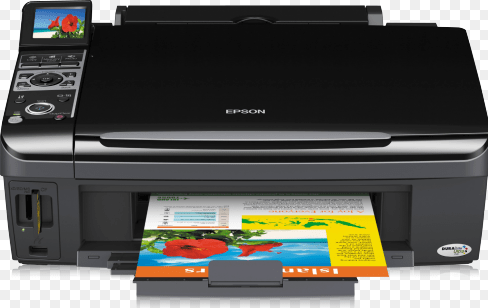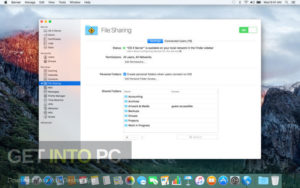
It is a brand name for a group of server operating systems released by Microsoft. It includes all Windows operating systems, Increase security, evolve your data center, and innovate faster with Microsoft Windows Server, the cloud-ready operating system. Mac OS X and Windows Server can be categorized as 'Operating Systems' tools. Shop for How To Build A Vpn Server On Windows 10 And Vpn For Mac Os X 10 7 5 Ads Immediately.
In Mac OS X, you can connect to servers that use the AppleShare, SMB, WebDAV, and NFS protocols.
Mac file sharing (AppleShare)
To connect to an AppleShare server:
- With the Finder active, from the Go menu,select Connect to Server.... Alternatively, with theFinder active, press
Command-k. - In the
Connect to Serverwindow that opens, type the fully qualified domain name (FQDN) or IP address of the server. Click Connect. - In the authentication window that appears, type your username andpassword for the server. If the volume has guest access, selectGuest instead. Click Connect.
- Select the volume of the server and click OK.

Windows file sharing (SMB)
Note: Because SMB traffic at Indiana University isfiltered, you may not access campus SMB servers from off campus unlessyou are using VPN.
To connect to an SMB server:
- With the Finder active, from the Go menu, selectConnect to Server.... Alternatively, with the Finderactive, press
Command-k. - In the
Connect to Serverwindow that opens, next tothe 'Address:' field, typesmb://, followed by thefully qualified domain name (FQDN) or IP address of the server, aforward slash, and then the name of the shared volume (e.g.,smb://bl-dept-server.ads.iu.edu/share).Note: Windows server administrators should havereverse DNS registration for Windows servers accessed by Mac or Unixsystems.
- Click Connect.
- In the authentication window that appears, type your username andpassword for the server. You may also be asked to specify the domainwhere the server is located. For most servers at IU, use
ADS. Click OK.
WebDAV
To connect to a WebDAV server:
- With the Finder active, from the Go menu, selectConnect to Server.... Alternatively, with the Finderactive, press
Command-k. - In the
Connect to Serverwindow that opens, type theURL of the WebDAV shared volume (e.g.,http://server.address/). - Click Connect.
- In the authentication window that appears, type your username andpassword for the server, and then click OK.
NFS

To connect to an NFS server:
- With the Finder active, from the Go menu, selectConnect to Server.... Alternatively, with the Finderactive, press
Command-k. - In the
Connect to Serverwindow that opens, next tothe 'Address:' field, typenfs://, followed by thefully qualified domain name (FQDN) or IP address of the server, aforward slash, and then the path of the exported share (e.g.,nfs://foo.com/home/u/jdoe). - Click Connect.
Answer
If you want to do a Windows share from Mac OS X you need to know a few pieces of information first:

- The name of the server.
- The name of the share.
- The name of the Network or Domain where the server lives.
- Your user name on the server.
- Your password on the server.
- As there is no browsing feature when connecting to Windows shares, choose Connect To from the Go menu in the Finder.
- Enter 'smb://your_server_name/your_share_name' (sans quotes)
Note: You must replace 'your_server_name' and 'your_share_name' with your appropriate information for this to work. - A dialog box then prompts you to authenticate yourself: Enter the name of the workgroup in which the server resides, your user name on the server, and your password in the appropriate fields.
- The share will appear in the Computer area in a Finder window and on your desktop (if you have selected the Finder preference to show mounted shares on your desktop)
If you enter the fully qualified hostname of your Windows server (eg: your_server_name.mit.edu), the dialog box will appear with the appropriate workgroup name already entered.
Mac Os Servers
Further notes from Apple's Knowledge Base.
You can find the entire article here.
- 'ServerName' may be an IP address or DNS name.
- The name of the 'share' (the shared disk, volume, or directory) must be specified. You will not be prompted for it.
- You cannot type spaces as part of the share name when connecting. In place of any space in the share name, type: %20
- You cannot connect to a share with a name that contains a hyphen. Resolve the issue by giving the share a name that does not contain a hyphen.
- Connecting to (mounting) two or more SMB volumes simultaneously may cause a kernel panic. Drag one volume to the Trash to eject it before connecting to another.
- The only alert message that Mac OS X displays for SMB login difficulties is 'There's no file service available at the URL <URL>.' This is sometimes correct and sometimes incorrect. This is the message that would appear if you mistyped your password, for example.
- Mac OS X connects to SMB via the TCP/IP protocol, not via the NetBIOS protocol.
- When troubleshooting a connection failure, you can ping the IP address of the Windows computer using the Mac OS X Network Utility to verify a TCP/IP connection between the two computers.
- Check Microsoft support resources for information on setting up file sharing on your Microsoft Windows-based computer. These may include Help files installed on your computer or the Microsoft online Knowledge Base https://support.microsoft.com/en-us. For an example, see article Q304040: 'Description of File Sharing and Permissions in Windows XP'

Mac Os Server For Mojave
Note: These instructions assume you are using Mac OS version 10.1.2. Locations, labels, and behaviors may differ in other versions of the OS.